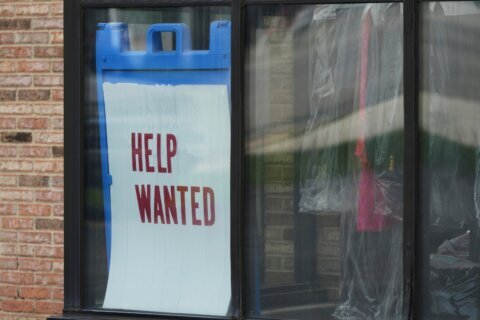The Greater Washington Partnership has completed a study that has both good news, and a big red flag about job growth in the D.C. region between now and the end of the decade.
There will be plenty of new jobs to fill, but a big skills gap for workers to fill them.
It concluded addressing the skills gap will take coordination between both employers and educators.
The biggest opportunities for employment will be in manufacturing, technology, artificial intelligence and health care.
“Last year alone, over 75% of job ads in these key growth occupations remained unfilled each month. Our region really has the potential to step up and meet the skills demand by 2030, but to do so, we would need to add 300,000 jobs in these sectors,” said Kathy Hollinger, president and CEO of the Greater Washington Partnership, a nonprofit whose members represent top employers across a diverse mix of industries in the region.
For its report, the nonprofit painted the region with a broad stroke, focused on the jobs markets and economies not only in the D.C. region, but from Baltimore to Richmond.
For employers, now is the time to upskill and re-skill existing employees, especially younger ones, to prepare them for the evolving jobs market.
“As companies and organizations are thinking about ways they can expose their employees to skills that are needed to not only promote their continuous learning, but to be able to best prepare them to succeed in any job that they have,” Hollinger said. “Whether it is right out of a four-year institution, a two year institution or right out of high school.”
For educators, the partnership and its members have a tool, the Employer Signaling System, that can help tweak curriculum to focus more on real time, evolving workforce needs. The group developed the system by using input from employers and labor market data.
“This tool enables educators in K-12 currently and postsecondary to consider aligning their curriculum with real world skill demands,” Hollinger said. “Creating a vital feedback loop to address talent gaps and help inform the skills being taught to learners.”
The Baltimore-D.C.-Richmond super region is home to 53 Fortune 1000 companies, 28 of which are Fortune 500 companies. Between 2020 and 2023, the region’s job market expanded by 300,000 jobs. The region is home to 10.5 million people.
A separate Greater Washington Partnership report noted the region’s workforce is younger, more diverse and more highly educated than those in other major Northeast metro areas.
The partnership’s full 2024 Skills Forecasting report is online.
Get breaking news and daily headlines delivered to your email inbox by signing up here.
© 2024 WTOP. All Rights Reserved. This website is not intended for users located within the European Economic Area.








